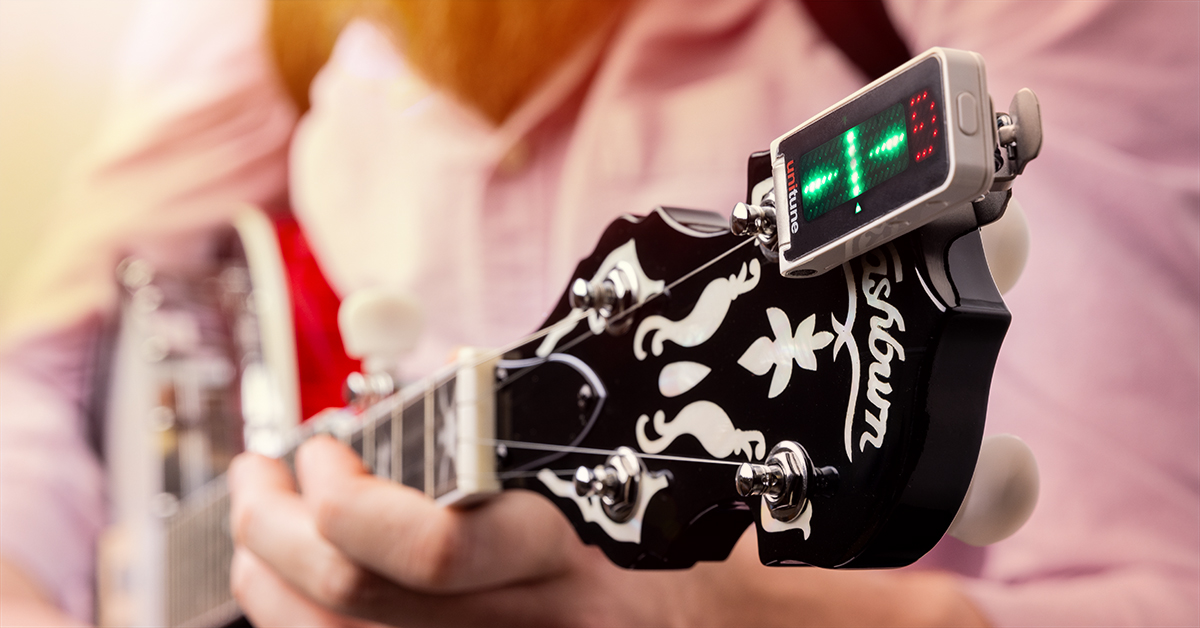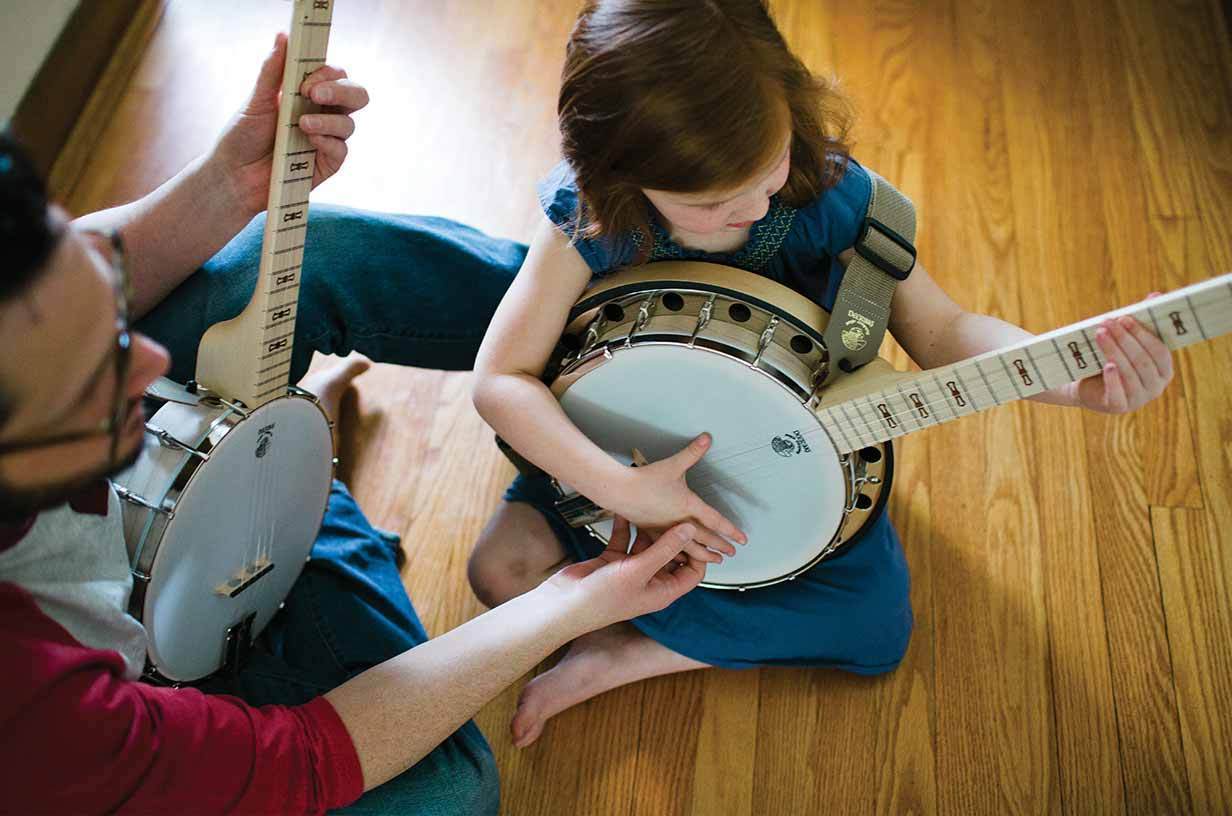The banjo is an incredibly versatile and captivating instrument that has played a prominent role in American folk and bluegrass music for centuries. If you’ve been captivated by its unique sound and are eager to learn, this essay will guide you through the essential steps to get started on your banjo journey. We will explore choosing the right banjo, understanding its components, tuning the instrument, mastering basic techniques, and developing a practice routine.
A Brief History Of Banjo
Starting in the 1840s, blackface minstrel performers began popularizing the banjo among middle-class Whites who purchased manufactured instruments and learned to play. By the end of the century, banjo repertoire had expanded from plantation and minstrel tunes to include sentimental popular songs, waltzes, mazurkas, polkas, and ragtime.
Played in the rural South since the second half of the nineteenth century, the banjo rose to become prominent in folk, country, old-time, and bluegrass music. Association with these genres, and the diminished presence of the instrument in twentieth-century African American music, led to the banjo becoming a representation of rural White culture. However, a wealth of historical research conducted since the 1970s has brought attention to the African roots of the banjo, and performers and scholars have been making efforts to restore the instrument’s place in Black culture.
Today, the banjo can be heard in virtually every genre of music. Bluegrass, both progressive and traditional, old-time, and Americana music are still going strong in recordings, concerts, and gatherings of musicians and fans at festivals. Folk rock bands, including Mumford & Sons and the Avett Brothers, have introduced the instrument to younger mainstream audiences. Virtuosos like Bela Fleck have continued to extend the range of what a banjo can do.
Choosing the Right Banjo

Selecting the right banjo is crucial to ensure an enjoyable and successful learning experience. There are different types of banjos such as open-back, resonator, and electric banjos, each offering distinct sounds and characteristics. Consider the style of music you want to play and your budget when making your selection. It’s also important to choose a banjo that is well-constructed, properly set up, and comfortable to play.
Understanding Banjo Components
The banjo has several unique parts that you won’t find in any other instrument.
Headstock
The headstock is located at the top of the banjo, where the pegs and are secured to the neck.
The pegs are typically on the back of theheadstock, with the strings fastened to the front-facing bolts.
Headstocks are usually carved in some ornate fashion but can also be a simple, no-frills piece designed strictly for utility.
Generally, the shape doesn’t affect a banjo’s sound but may influence the placement of the tuning pegs.
Tuners
Tuners, also known as pegs, are the small knobs attached to the back of theheadstock.
Turning them left and right loosens and tightens the strings, resulting in different tuning patterns.
Typically, banjos have four tuners attached to theheadstock with a fifth further down the neck.
Most friction pegs are a hard plastic or ebony material, but you might find some made from metal as well.
Strings
Modern banjoes usually have five strings tuned to open-G.
Unlike other stringed instruments, though, you might find that a banjo has only four strings attached to the headstock.
The fifth high string might be shorter, attached about halfway down the neck.
However, this depends on the type of banjo you’re dealing with.
Professional banjo strings are made of steel, but you can find inexpensive strings made of nylon as well.
To get the iconic banjo twang, though, you need to use steel strings.
Fingerboard
The banjo’s fingerboard is where the magic happens.
It’s always made of hardwood such as ebony and makes up the front-facing top half of the banjo’s neck.
The strings are tightly wound at theheadstock so the banjo player can form cords along the fingerboard.
The fingerboard typically has inlays made of silver or steel.
These decorate the length of the fingerboard but don’t affect how the banjo sounds in any way.
However, experienced players use them as markers signifying how far up and down the fingerboard they’re playing.
Frets
Unless you’re playing a fretless banjo, odds are the instrument is going to have frets running perpendicular to the entire length of the neck.
They’re typically made from nickel-silver and are either pressed directly into the fingerboard or simply secured to the neck with glue.
These help signify different tonal sections of the fingerboard, allowing the player to alter the pitch and frequency of the sounds coming from the strings quickly and efficiently.
Neck
While the fingerboard is technically also part of the neck, the two deserve separate considerations.
The back-facing part of the neck is always made from wood but can be different from what the fingerboard is made from.
Banjo neck lengths vary depending on what type of banjo you’re playing, but a standard banjo usually has a 25.5-inch neck.
Truss Rod
While they might look straight, banjo necks are actually slightly curved to make them easier to play.
Over time, the neck starts to bend a bit too much and needs to be corrected using the truss rod.
The truss rod, located underneath the fingerboard, allows you to adjust this curvature.
Also, the truss rod helps you manage the strings’ height off the neck, affecting the banjo’s sound and playability.
Pot Assembly
A banjo’s belly is known as the pot assembly, composed of a variety of parts that have a dramatic impact on the instrument’s sound.
If you imagine the following parts as a top-to-bottom series of rings, then you should have a pretty clear idea of how the pot assembly is constructed.
Tension Hoop
Typically made of brass or steel, the tension hoop is the outer ring attached to the banjo’s head.
It secures the head at the player’s desired tension, affecting the instrument’s resonance and volume.
Held together by screws and hooks, the tension hook
Head
The banjo head is what resonates when the player plucks the strings, vibrating from the sound waves they emit.
Modern banjo heads are almost always a mylar material.
However, luthiers used to use animal hides in the early days of the instrument’s history.
The head’s thickness determines how strongly it vibrates when the sound waves hit.
If you know how to deconstruct a banjo, you can swap out the heads to create different sounds depending on what you’re trying to achieve.
Tone Ring
The tone ring is one of the most important parts of the banjo.
The material it’s made from determines the instrument’s tonal quality roundness of sound.
Banjo players might swap out a bronze tone ring for brass or some other variety of metal to match their intended sound.
Rim
The rim is the main component of the pot assembly, serving as a base to which you secure all the other parts.
It’s made of a lighter wood than the neck, allowing sound to travel throughout the pot assembly and bounce back from the resonator toward the audience.
Tuning the Banjo
Before you can start playing, it’s crucial to tune your banjo. The most common tuning for a 5-string banjo is known as “Open G” tuning, with the strings tuned to G, D, G, B, and D. You can use an electronic tuner, a piano, or online resources to ensure each string is in the correct pitch. Regular tuning is essential to produce pleasing sounds and play in harmony with other musicians.
Mastering Basic Techniques

The earliest style of playing banjo, and still an important one, is called the clawhammer technique. The name comes from the clawlike positioning of the hand, and most modern playing styles grew out of it. Clawhammer involves striking the four main strings in a downward motion using the index or middle fingernail. Simultaneously, the shorter fifth drone string is played with the thumb using a lifting motion. Complex melodies can be played with the addition of techniques such as “drop thumb” and “double thumbing”.
While clawhammer is largely aimed at creating driving rhythms, variations of the technique allow the player to sound single-string melodic notes, strum harmonic chords, and produce all sorts of percussive effects on the banjo’s head. A whole range of brushing and picking effects gives the banjo the ability to play a lead instrument role, rather than simply being an accompaniment to other instruments.
Traditional Appalachian banjo involved a style called two finger up-pick. As noted above, banjo player Earl Scruggs refined and popularized a three-finger style that has become the basis for modern bluegrass banjo technique, and is often referred to as “Scruggs style.” Even people uninterested in bluegrass became familiar with the fast, highly arpeggiated style Scruggs developed thanks to his “The Ballad of Jed Clampett,” the theme song for TV’s “The Beverly Hillbillies.”
Developing a Practice Routine
Consistency and regular practice are crucial for progress on the banjo. Establishing a practice routine will help you stay focused and dedicated to your learning journey. Set aside dedicated practice time each day, even if it’s just 15-30 minutes. Divide your practice session into segments, focusing on different aspects such as technique, scales, chord progressions, and learning new songs. Experiment with different practice techniques, such as playing along with recordings or using a metronome, to improve your timing and rhythm.



